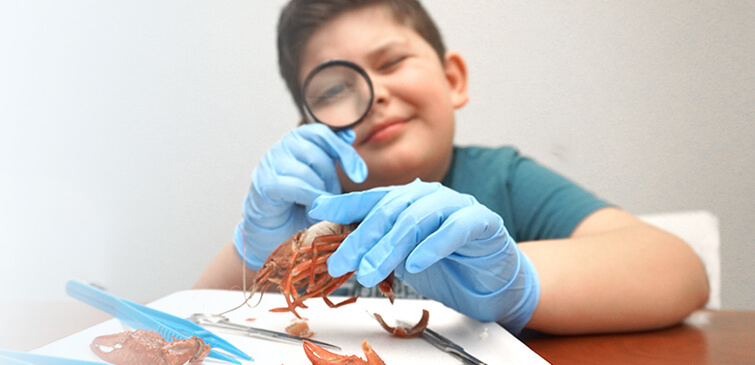Preserved Dissection Specimens
Specimens and preserved animals for dissection.
Shop the HST store for high-quality, long-lasting, preserved specimens for dissection.
All dissection specimens come with our 60-day satisfaction guarantee. HST specimens fit homeschool curriculums, classroom labs, and co-op projects.
You’ll find that our specimens come in a variety of sizes, quantities, and kits. Invertebrate specimens (animals without backbones) include clams, crayfish, earthworms, grasshoppers, and squid. Vertebrate specimens (animals with backbones, muscles, and skeletons) include fetal pigs, fish, frogs, lampreys, minks, pigeons, rabbits, rats, sharks, snakes, and turtles.
We also sell mammal organs for dissection. You can choose from a cow’s eye and a sheep’s heart, eye, kidney, brain, uterus or pluck.
What Others Are Saying About HST Dissection Specimen
Preserved Specimen Shelf Life
We guarantee that your specimen(s) will arrive fully preserved and void of decay. Your preserved specimen will also stay moist for one year after delivery and do not need refrigeration. This means you won’t have to worry about them touching or contaminating your food.
For best results, keep dissection specimens out of direct sunlight and store them in a room that doesn’t trap heat (i.e. not the attic). Your preserved specimens may discolor over time; this discoloration is normal and does not signal decay.
Seal your dissected specimens in a Ziploc bag after use and be sure to remove any air pockets. Ideally, you’ll want to finish a dissection within one week. If that’s not possible, you can refresh the dissection specimen with glycerin.
The Preservation Process
Chemical solutions preserve animal specimens. These solutions are also known as fixatives or embalming fluids. You may remember formaldehyde from your lab days in schools. That’s the “chemical” smell many of us… despise.
But, fortunately, we use a lot less formaldehyde today. We use it as an initial preservative, before displacing it with a glycol solution. Then we displace the glycol with a water solution. The infamous “preservative” smell? It's almost nonexistent! Some fish specimens, like perch and dogfish, may contain a trace, natural scent.
We recommend that your students wear latex or nitrile disposable gloves during dissections. We also recommend eye protection, to avoid traces of solution, during dissections.
HST sells plain, single-injected, and double-injected specimens individually, or as part of a dissection kit. Plain specimens are exactly as they sound—nothing added. You can see the animal's arteries in a single injection; they’re red. In a double injection, you can see red arteries and blue veins. The injections are made from rubber (e.g., latex).
All preserved specimens come with a safety data sheet. Most of our customers order a dissection guide if they're working on an unfamiliar specimen.
The Role of Preservatives in Dissection Specimens
Preservatives keep dissection specimens limber and flexible. "Soft" specimens enable your dissection tools to work properly. They also prevent decay and the spread of disease. They allow us to ship unspoiled specimens to street addresses in the United States (all 50 states).
Without preservatives, animal dissections would be rare and expensive. Why? You would need access to recently-dead (“fresh”) specimens. You would also have to work fast to avoid decomposition. Finally, you would need medical-grade protective clothing to avoid bacterial and fungal diseases.
Conducting dissections with preserved specimens has led to breakthroughs in anatomy, biology, and other life sciences.
For more ideas, see our Owl Pellet Kit.


